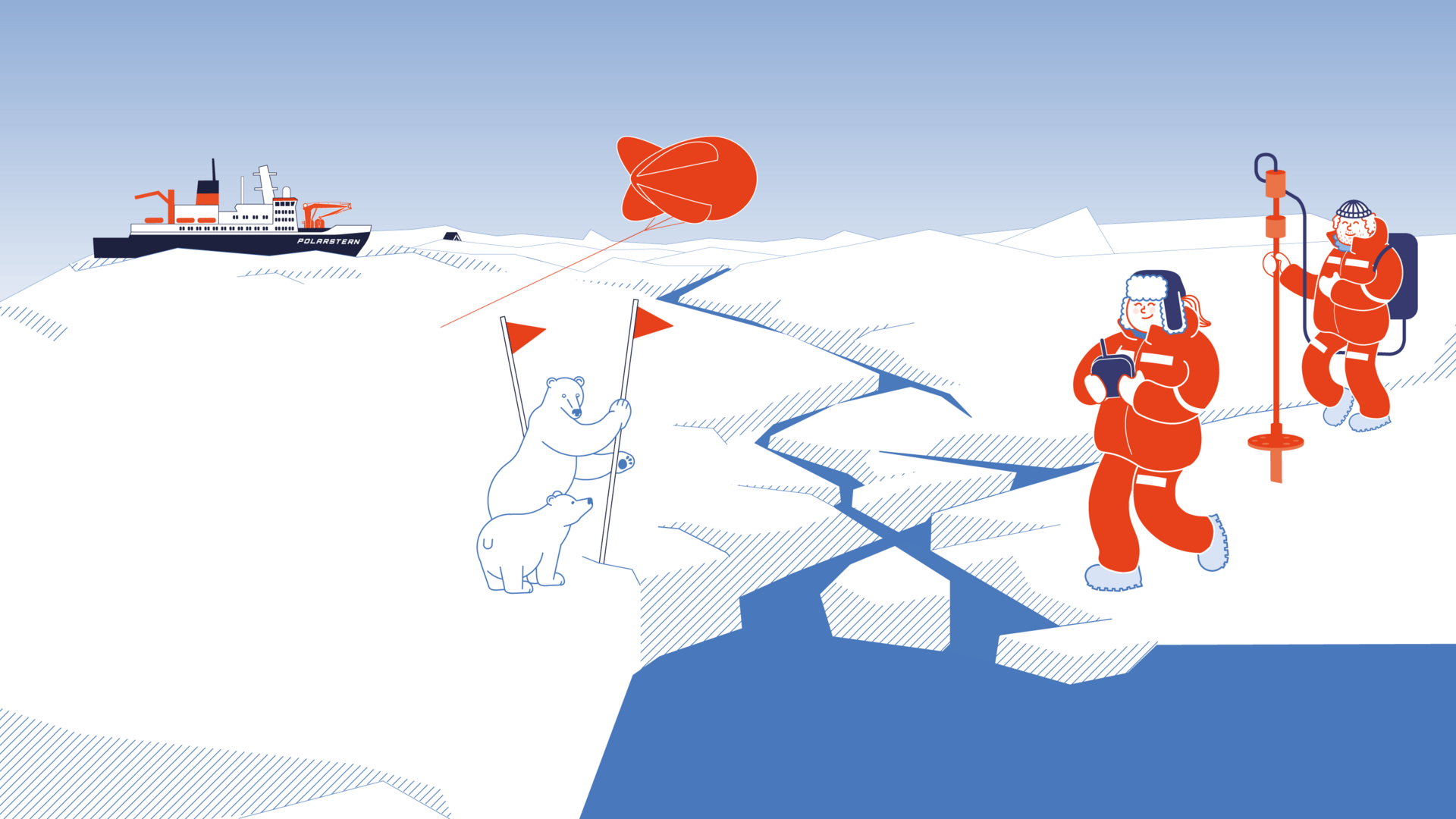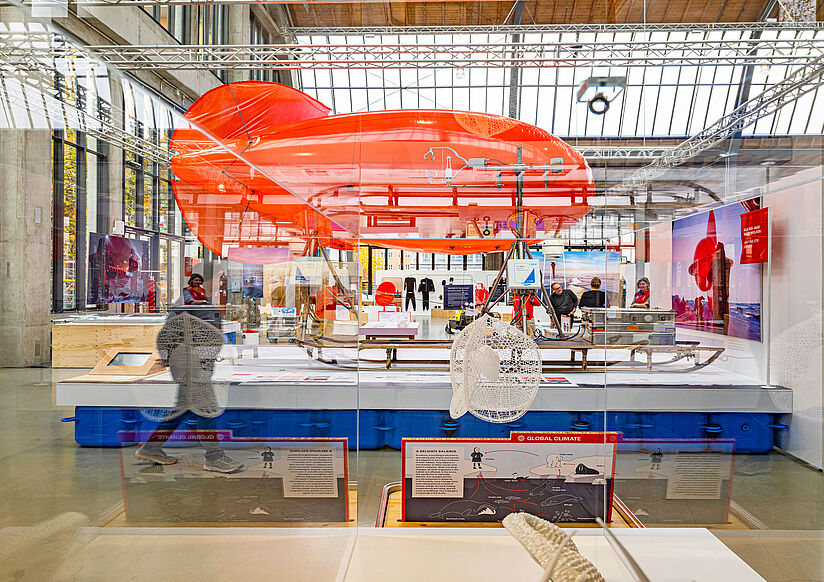
Thin Ice – Come along on a climate expedition!
Polar research has shown that the climate crisis is serious. We have to work together for change. Let’s start!
Photo: Deutsches Museum
Special exhibition
22 November 2024 to 9 November 2025
Humanity is skating on very thin ice. Climate change is becoming increasingly noticeable even in our temperate latitudes. And even more so in the Arctic, where the climate has already changed significantly. This is the result of the ‘Polarstern’ expedition, which started in 2019. You can find out how the researchers travelled, what exactly they did and what challenges they faced in the special exhibition ‘Thin Ice’ at the Deutsches Museum Verkehrszentrum.
The "Thin Ice" exhibition takes visitors on a climate expedition. School classes and families experience what it is like to conduct research in the Arctic. They measure the thickness of the ice, search for microorganisms and find out how long there will still be multi-year ice. It becomes clear: The Arctic is our early warning system. And the warning is clear. There is little time left. We must act now to prevent a climate catastrophe.
Photo: Alfred-Wegener-Institut | Lukas Piotrowski
Photo: Alfred-Wegener-Institut | Esther Horvath
The climate change that we humans have caused is the greatest challenge of our time. The Arctic has already been severely affected. Over the past decades, the Arctic ice cover has decreased dramatically: while around seven million square kilometres of ocean were still covered in ice in the 1980s, by 2022 it had shrunk to around 4.5 million square kilometers. If this trend continues, the Arctic will be almost completely ice-free during some summer months. Such a development would seriously impact the global climate and would have palpable repercussions for mankind as well.
However, in order to understand the significance of such predictions, the status quo must first be understood. This is why the Alfred Wegener Institute's research vessel POLARSTERN set off on an expedition to the Arctic in the fall of 2019. The goal was to research the Arctic climate: Several research teams were tasked with collecting climate data over the course of a year.. The initial results are now available and clearly show that the Arctic climate has already changed significantly. But it is not yet too late.
There is still hope for both the Arctic and our temperate climate, but only if society and politicians decide to act now. The exhibition links this declaration with the history of the expedition and the presentation of scientific research in an extreme environment.
Photo: Deutsches Museum, München | Hubert Czech
"Thin Ice" takes visitors on a climate expedition. They can immerse themselves in the world of Arctic expeditions and climate research and slip into the role of researchers. Visitors board the POLARSTERN research vessel, find out about life on board and learn that the cold poses the greatest risk. They learn that it is extremely complicated to screw together measuring instruments while wearing thick polar gloves and are invited to familiarise themselves with the safety equipment and the danger of polar bears. One of the highlights of the exhibition is a self-built hut that offered the polar bear rescue team on the Polarstern protection against the cold and wind. Scrawled like a school bathroom stall, it provides exciting impressions of the everyday life of the polar guards.
Photo: Deutsches Museum, München | Hubert Czech
Visitors can slip into the role of researchers and immerse themselves in the exhibition with the help of research diaries. Knowledge, creativity and attention are required here if you want to support science with your data! The diaries can be analysed at the end of the exhibition.
The five research stations on the ice show the technical effort and personnel involved in collecting data. You will learn which alarming theories about the climate and the impending climate catastrophe can be substantiated by the data. For example, the helium balloon nicknamed "Miss Piggy" measures the temperature above the Arctic and a sample collector takes water from microorganisms deep under the ice. Ice cores provide information about the history of the ice. The complex interrelationships of climate change thus become clear. And it becomes clear that the Arctic has already changed and is suffering enormously from climate change.
In cooperation with the Stiftung Deutsches Technikmuseum Berlin and the Alfred Wegener Institute, Helmholtz Centre for Polar and Marine Research.
The exhibition is under the patronage of the Federal Minister of Education and Research.


